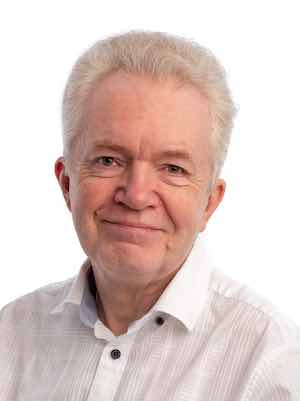My wife and I visited Wittenberg, a town made famous by the reformers Martin Luther and Philip Melanchthon, this summer.
Our visit followed a week teaching about the environment on the Bible and Culture course run by IFES Graduate Impact in Woltersdorf near Berlin.
It was on Oct. 31, 1517, 500 years ago, that Luther pinned his 95 theses to the door of Castle Church in Wittenberg, an event that many consider started the Reformation.
So, around the world this year many events are celebrating the Reformation, and certainly Wittenberg is not missing out on this with a number of special exhibits and events.
Of course, we had a special interest in the more environmental parts of Luther’s legacy.
We visited the Luther Garden, which had 292 of the 500 trees (one for each year since 1517) that had been planted in the last few years in three sites in Wittenberg.
Each tree was planted in collaboration with a church partner who also planted a tree in their own country. The trees were used in a symbolic act of reconciliation, and as far as we could see the environmental aspects of planting the trees were not highlighted.
We also saw the oak tree (or rather its successor) where Luther burned the works of his opponents and the Papal Bull, which threatened him with excommunication in 1520.
Luther’s most famous environmental story concerns the planting of an apple tree. “Even if I knew that the world were to collapse tomorrow, I would still plant my apple tree today” is a saying widely ascribed to Martin Luther, although there are some doubts as to whether he really said it.
In fact, the quote seems to have arisen from the Confessing Church in Germany in World War II. It does appear, however, that Luther loved apple trees, and their spring color for him was symbolic of the resurrection from the dead.
The Reformation had many positive aspects, including the idea that all people should be able to read the Bible for themselves.
However, it did tend to concentrate attention on the relationship between God and humans. This is not, in itself, a bad thing, but it did mean that the natural world gained less attention.
The quote, “God writes the gospel not in the Bible alone, but on trees and flowers and clouds and stars,” is often attributed to Luther, although again there is some uncertainty whether it belonged to him. If this were Luther, then it was a rare foray into natural theology.
Luther was mostly concerned with personal salvation, and he was undoubtedly anthropocentric.
It is unlikely that Luther would have considered himself an environmentalist, although he did love nature.
At times, he saw the creation as merely a backdrop, or even as a threatening and hostile environment, marred by human sin.
It is certainly the case that Luther’s writings were not heavily concerned with creation care or the environment, and some of the other reformers like John Calvin are more often quoted in this regard.
So, looking at Luther through an environmental lens suggests that his views were not particularly in line with the modern-day Christian environmental movement. But he was a man of his time, and 500 years ago environmental problems were not in the news.
How he would have reacted to today’s problems is uncertain, but maybe he would have looked again at Romans 8:18-25.
We may wish that Luther had led church thinking in a somewhat different direction, but he also brought about many positive changes.
We should celebrate 500 years since the beginning of the Reformation with our brothers and sisters in the worldwide church.
It is for us who are living today to bring about another reformation of the church – an environmental reformation.
Martin J. Hodson is a plant scientist and operations director for the John Ray Initiative. He has more than 100 research publications and speaks widely on environmental issues. A version of this article first appeared on the JRI blog. It is used with permission. You can follow him on Twitter @MartinHodson1.
An environmental scientist on the board of The John Ray Initiative, a UK-based charity connecting environment, science and Christianity. He recently published the 2nd edition of A Christian Guide to Environmental Issues and Green Reflections: Biblical Inspiration for Sustainable Living (both co-authored with his wife, Margot).

